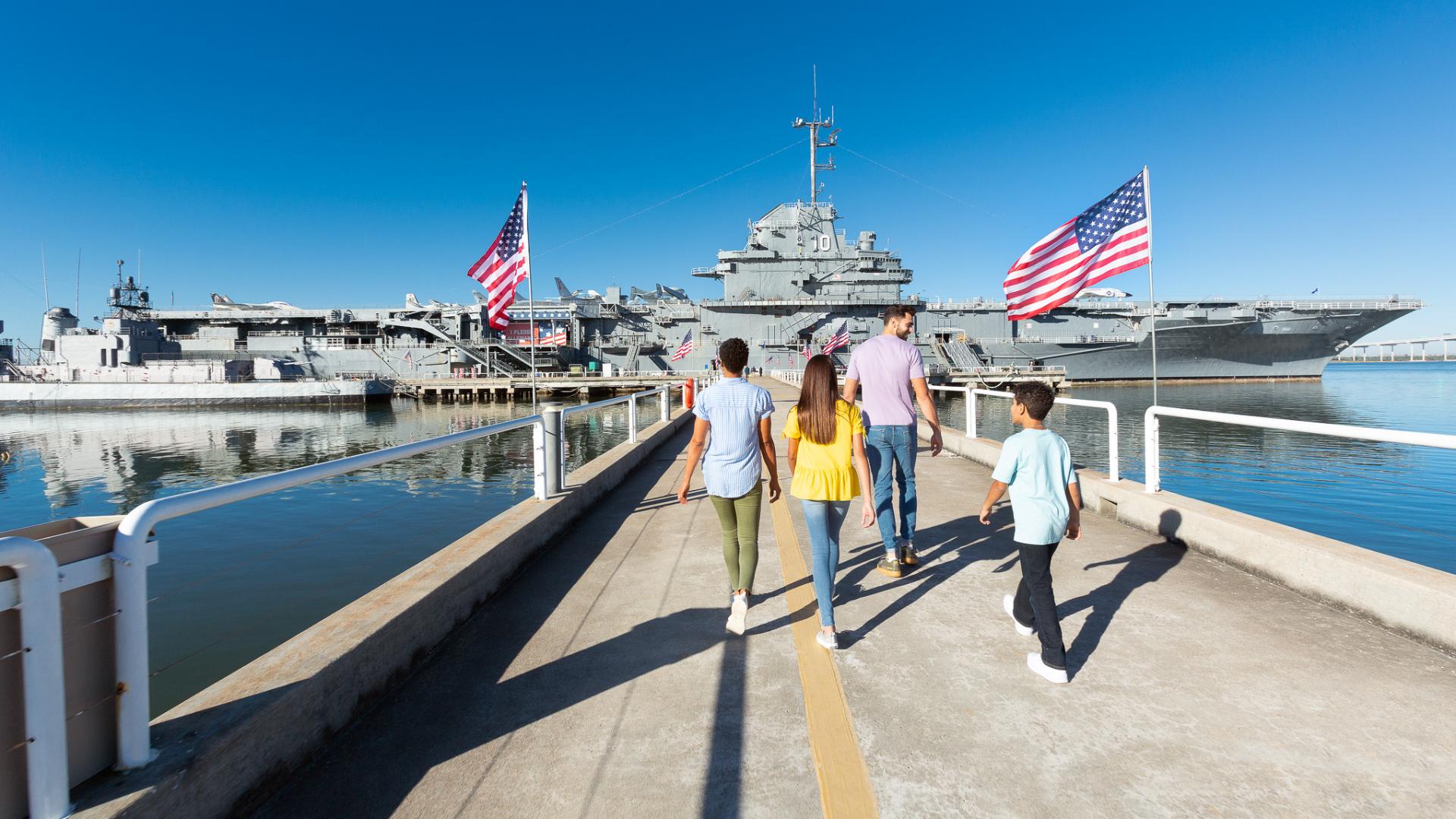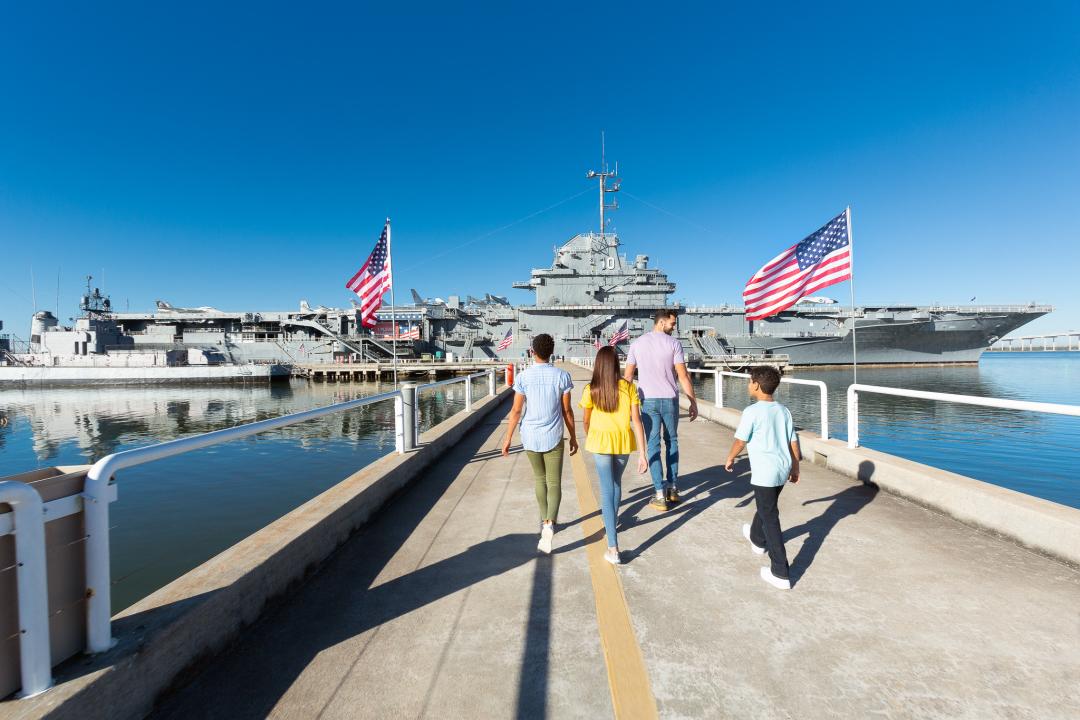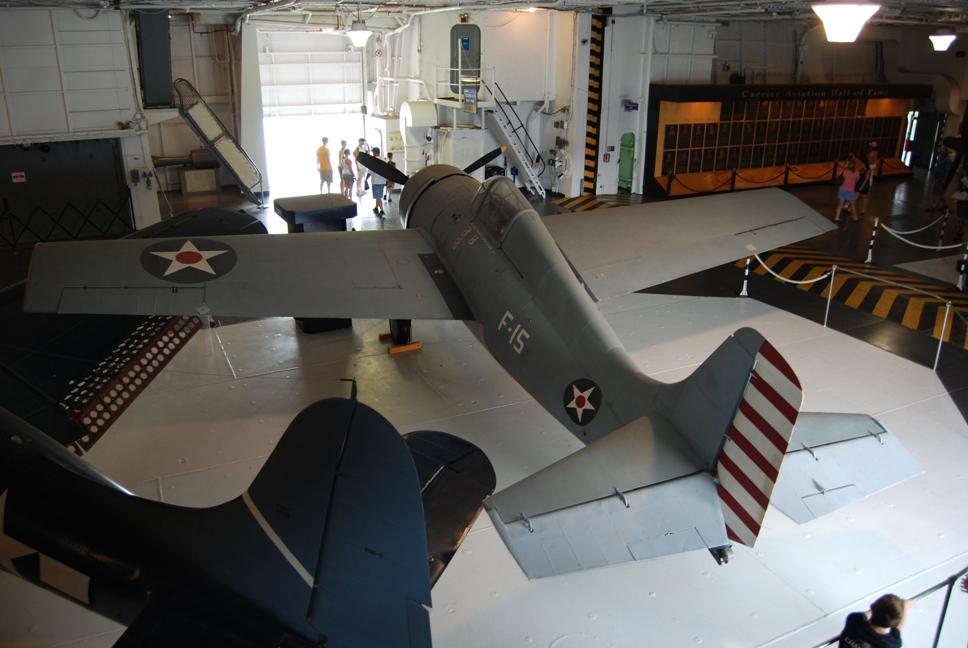
Oh Mother, dear Mother, take down that blue star; Replace it with one that is Gold.
Your son is a Wildcat pilot, He'll never be thirty years old. (WW 2 Author unknown)
Pulled from the bottom of Lake Michigan in 1988, the Wildcat on display in Hangar Bay One of the USS Yorktown is one of only sixty-five F4F-3As built by Grumman in 1941 and one of two remaining F4F-3As in existence (the other is at the National Museum of Naval Aviation in Pensacola, Florida). These Wildcats were built for export, but were issued in the spring and summer to Navy and Marine squadrons due to the nation's shortage of fighter aircraft. Their wings were non-folding and their engines were Pratt & Whitney 14 cylinder R-1830-90 with a single stage supercharger.Patriots Point's Wildcat is bureau number 3956. In May 1941, this Wildcat was delivered to VMF-1 at Quantico, Virginia. It was among the first monoplane fighters received by the Marines. Redesignated VMF-111 in July, the "Devil Dogs" deployed to San Diego, California, in December 1941.
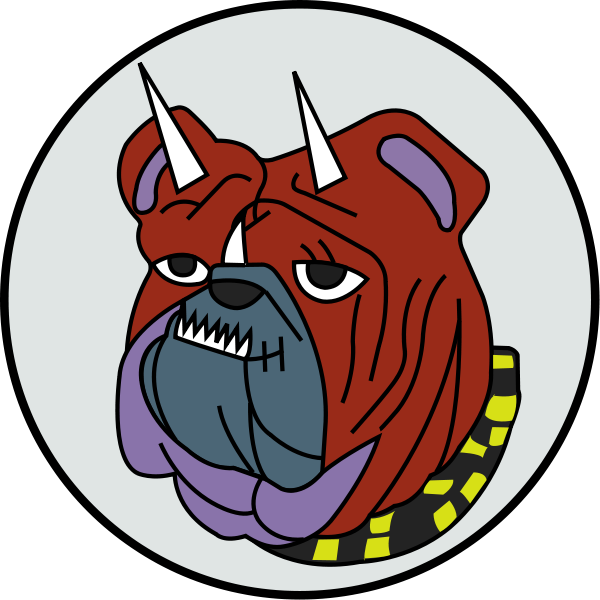
Due to the desperate shortage of fighter aircraft at Pearl Harbor, Hawaii, Wildcat 3956 was sent by transport to Hawaii, arriving 18 January 1942. On 29 January it was issued to VF-2 ashore at Ewa on Oahu. VF-2 was known as the "Flying Chiefs" due to the large number of enlisted Naval Aviation Pilots (NAPS) in the squadron. At the time the squadron had six officers, and seventeen chiefs and petty officers.
In early February 1942 Wildcat 3956 and nine other VF-2 Wildcats were detached under Lieutenant Commander "Jimmy" Flatley to protect the USS Saratoga (CV-3) on her trip home to Bremerton, Washington. A torpedo had badly damaged the USS Saratoga on 11 January 1942.

On 09 February 1942, Wildcat 3956 made the 59,000th landing on USS Saratoga and the pilot was Aviation Chief Machinist's Mate (ACMM) Gordon F. Firebaugh. Pilot Firebaugh would later get a commission and was involved in a dogfight on 07 August 1942 with the most famous Japanese ace, Hiroyoshi Nishizawa.

Wildcat 3956 was flown from NAS Seattle to NAS San Diego by Chief Firebaugh on 15-16 February 1942 and remained attached to VF-2 until 31 March 1942, when it was transferred to Advanced Carrier Training Group Pacific (ACTG Pac) to be used in fighter training and carrier qualifications.
The rest of its career was spent as a fighter training aircraft. It was sent to NAS Jacksonville, Florida, in December 1942 and finally to NAS Glenview, Illinois, for pilot carrier qualification training on the USS Sable, a converted side-wheel steamer with a flight deck. In November 1943, a young pilot landing 3956 on the Sable suffered an arresting wire failure and he rode 3956 over the side into Lake Michigan. The Navy pilot swam away and was picked up, but 3956 would descend to the lake bottom and await forty-four years before being pulled out of the deep in 1988. She was restored by a Grumman restoration crew at Bethpage, New York and donated to Patriots Point Naval and Maritime Museum. Our Wildcat was dedicated on 31 October 1993.
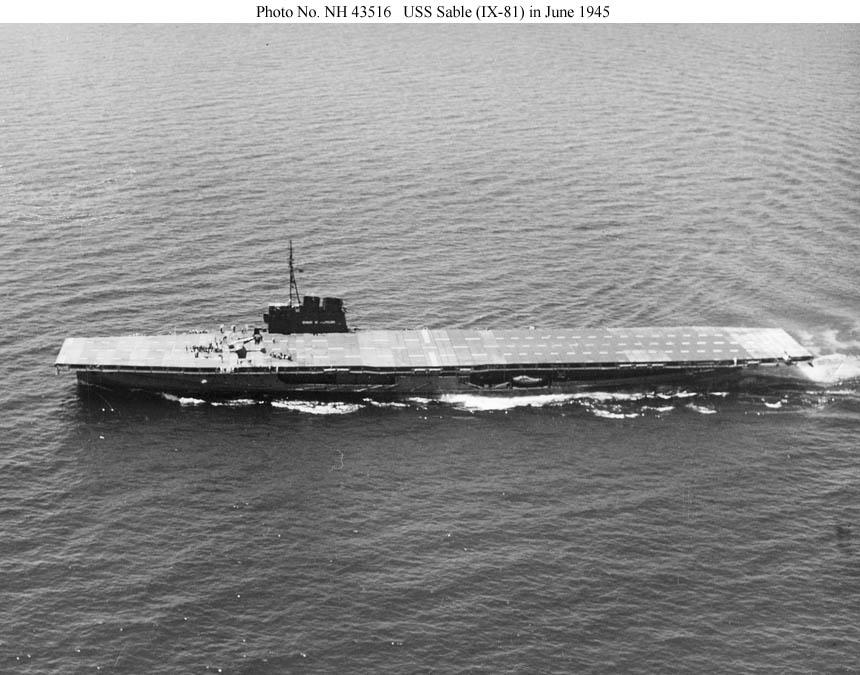
The first ace in Wildcats was Lieutenant Butch O'Hare, VF-3, who received a Medal of Honor for his shoot down of five Japanese bombers on 20 February 1942. Patriots Point's Wildcat is painted with Butch's VF-3 colors and number. Sixty-one naval aviators flying the Wildcat gained "Ace" (five kills) status (27 Navy and 34 Marines). During World War II, one hundred and seven Wildcat pilots were lost in action.
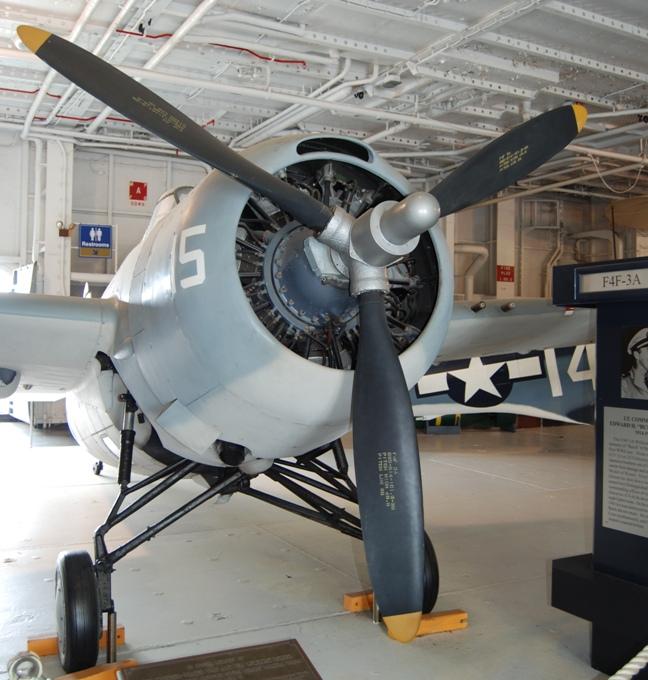
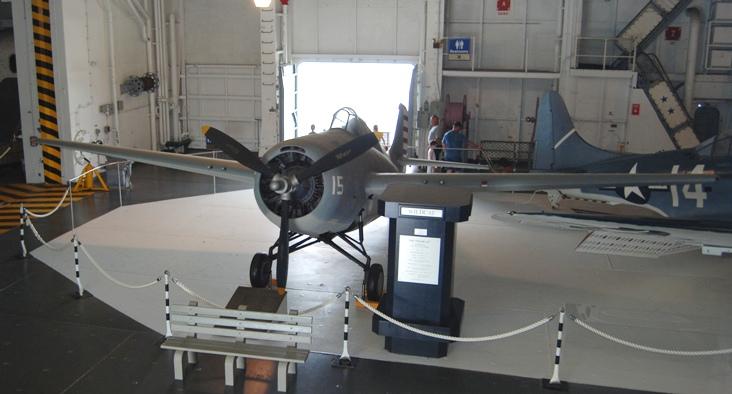
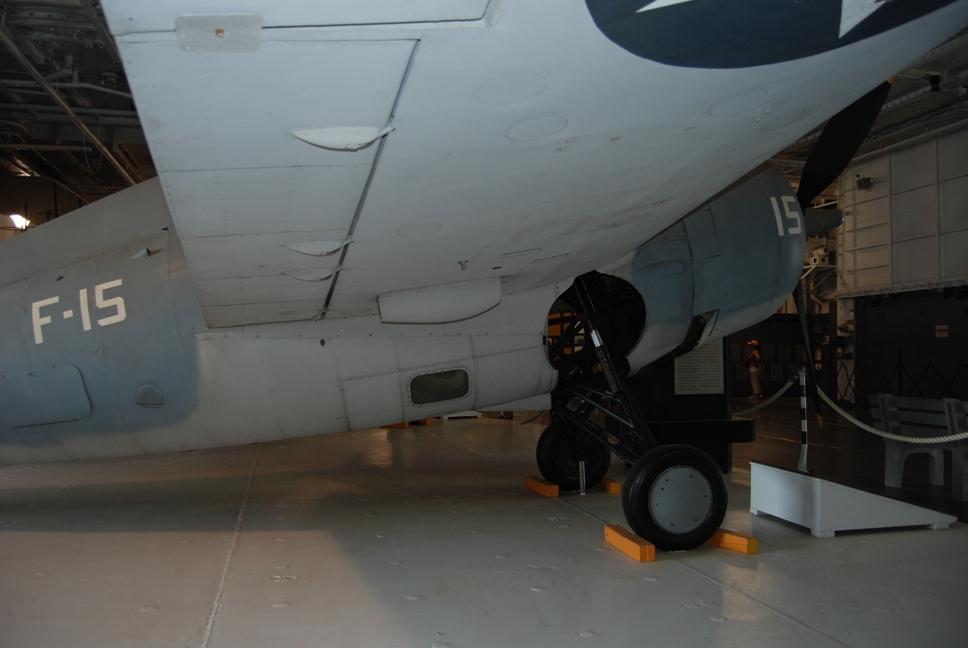
Rare WW II F4F Wildcat taking off from Skiatook, OK airport.
